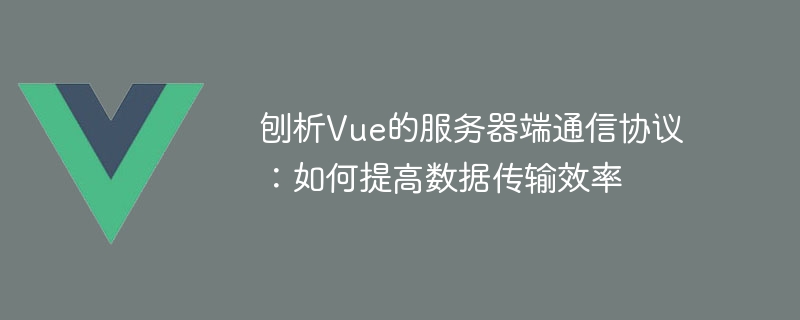

Analysis of Vue’s server-side communication protocol: how to improve data transmission efficiency
Vue, as a popular front-end framework, is widely used in various web applications . In a Vue project, communicating with the server is an essential part. Therefore, understanding and mastering server-side communication protocols is crucial to improving data transmission efficiency. This article will analyze and discuss Vue's server-side communication protocol to explore how to optimize data transmission efficiency.
1. Understanding the server-side communication protocol
The server-side communication protocol refers to the communication rules between the front-end Vue application and the back-end server. Common server-side communication protocols include HTTP, WebSocket, etc. Among them, HTTP is a stateless protocol. The request-response mode is that the front end sends a request to the server, and the server processes the request and returns a response to the front end. WebSocket is a full-duplex communication protocol that enables the server to actively push data to the front end.
2. Methods to optimize data transmission efficiency
3. Code example
// 服务器端配置
const http2 = require('http2');
const fs = require('fs');
const server = http2.createSecureServer({
key: fs.readFileSync('server.key'),
cert: fs.readFileSync('server.crt')
}, (req, res) => {
res.end('Hello World!');
});
server.listen(3000);// 服务器端配置
const express = require('express');
const compression = require('compression');
const app = express();
app.use(compression());
app.get('/', (req, res) => {
res.send('Hello World!');
});
app.listen(3000);// 使用Axios库发送请求
import axios from 'axios';
axios.get('/api/data', {
// 设置缓存策略
headers: {
'Cache-Control': 'max-age=60'
}
}).then((response) => {
console.log(response.data);
}).catch((error) => {
console.log(error);
});The above are some suggestions and code examples on how Vue's server-side communication protocol can improve data transmission efficiency. By using the HTTP/2 protocol, compressing data, and using caching mechanisms, data transmission efficiency can be effectively optimized and user experience improved. In actual projects, more detailed optimization can be carried out according to specific scenarios to achieve better results.
The above is the detailed content of Analyzing Vue's server-side communication protocol: how to improve data transmission efficiency. For more information, please follow other related articles on the PHP Chinese website!
 The difference between console cable and network cable
The difference between console cable and network cable
 How to resume use of gas after payment
How to resume use of gas after payment
 fil coin price today
fil coin price today
 How to solve website restore error
How to solve website restore error
 css background code collection
css background code collection
 What is the reason why the computer screen is black but the computer is on?
What is the reason why the computer screen is black but the computer is on?
 What is the transfer limit of Alipay?
What is the transfer limit of Alipay?
 Absolute reference input method
Absolute reference input method




